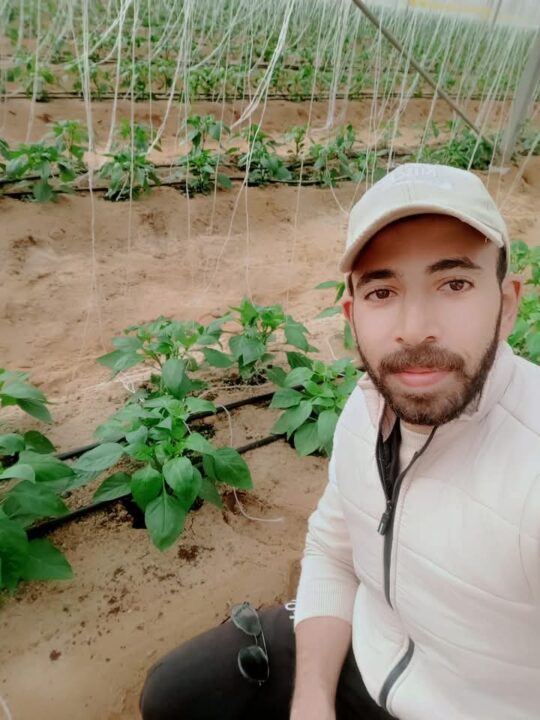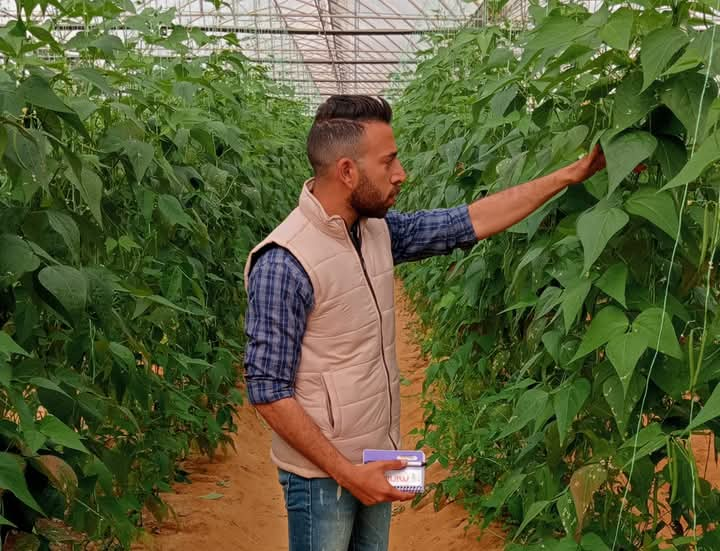Travelling across Egypt’s governorates, Ayther Amr — a young Egyptian phytopathologist and Master’s researcher at Cairo University — is demonstrating how the blend of biological innovation and precision agriculture could redefine sustainable farming in Egypt.
As a member of the plant pathology research team at the Agricultural Research Center and through his work with the private firm Project Future Egypt, Amr focuses on adapting biological solutions to local agricultural and climate conditions. His main work centres on beneficial strains of Trichoderma — eco-friendly alternatives to chemical pesticides.
In Egypt’s challenging desert environment, Amr participated in greenhouse trials testing two Trichoderma strains, applied in both liquid and powder forms, on tomato plants infected with Botrytis cinerea — the fungus responsible for grey mould, a widespread pathogen affecting food and ornamental crops worldwide.
“Trichoderma is a genus of fungi widely used in agriculture as a direct biological control agent against plant pathogens,” Amr explains.
He describes the experiment: “We tested two scenarios — one with mild infection and another with advanced symptoms — to evaluate how effectively these beneficial fungi could work under precision-controlled conditions. We used an advanced climate control system powered by Internet of Things (IoT) technology to monitor humidity, temperature, and ventilation in real time.”

The trial, which lasted between 7 and 15 days with daily observation, produced encouraging results. In mildly infected plants, fungal activity was stopped entirely. In plants with more advanced infection, disease severity dropped by over 60% compared to untreated plants.
“The experiment proved that technology alone isn’t the solution — but it creates the optimal conditions for nature to act,” Amr says. “It gives beneficial microbes the environment they need to work effectively.”
Following the success in greenhouses, the team extended the trials to open fields across five Egyptian regions: Beni Suef, Minya, Sohag, El Sadat, and Mansoura. The results were consistent.
“This consistency helped convince farmers,” Amr notes. “Despite different backgrounds and ways of thinking, farmers across these areas shared the belief that healthy soil, supported by precision agriculture and beneficial microbes, is key to a safer, more sustainable future.”
Looking ahead, the team is preparing to collaborate with Chinese partners to expand this approach to diverse environments across Africa and Asia. The goal, Amr adds, is to develop advanced bioformulations adapted to different climate zones and refine the technology for large-scale open field use.


